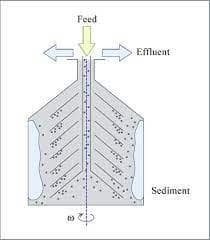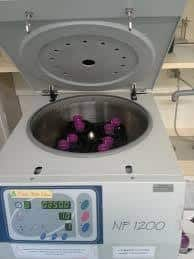Centrifugation - Definition, Applications of Centrifugation with FAQs
The technique you used for the separation of mixtures with the help of a centrifugal force is called centrifugation. The machine that is used for the purpose of centrifugation is a centrifuge machine and is a device that is working based on an electric motor that provides rotational movement around a fixed axis. The principle behind the working of the centrifuge machine is the principle of sedimentation.
This Story also Contains
- Centrifuge machine
- The centrifuge or centrifuge machine
- Applications of centrifugation
Sedimentation is the movement of particles in the gravitational force. According to this principle, substances are separated based on their density in the influence of the gravitational force acting on them. The centrifugation process can be undertaken only the dispersed material that is to be separated must be denser than the medium in which it is present.
Ultrafiltration, density gradient, phase separation, isopycnic, pelleting, etc. are different types of centrifugation methods. Among these techniques used pelleting is the very common one and for this type of process, the particles are concentrated as a pellet in the bottom of the centrifuge tube, and thereby it is separated from the solution. In the phase separation technique used the chemicals present on them were converted from a matrix.
In ultrafiltration technique used it is used for the separation of macromolecules with the help of a membrane. With the help of a self-generating density gradient that is established through the equilibrium sedimentation, isopycnic centrifugation is done. Centrifuge machine works based on the relative centrifugal force and the degree of acceleration in multiples of the gravitational force.

Centrifuge diagram
Also read -
Centrifuge machine
The centrifuge machine or Centrifuge definition can be given as an instrument that is used in the process of centrifugation is the centrifuge machine and is invented by the scientist Antonin Prandtl in 1864. And the first centrifuge machine was used in the dairy industry for the separation of cream from milk on a large scale. Later many scientists applied the centrifuge machine in the laboratory field and in 1869 Meischer successfully isolated nucleic acids from the white blood cells which is a very important development for the discovery of DNA inheritance. Later in the 1920s Swedish chemist, Swedberg discovered the ultracentrifuge.

Centrifuge machine
Related Topics Link - Threshing
The centrifuge or centrifuge machine
There are mainly two types of centrifuges in common they are floor standing and benchtop models.
- Floor standing centrifuge
This type of centrifuge machine needs at least 1 square meter of lab floor space. This type of centrifuges included ultracentrifuge as super-speed centrifuge and low-speed centrifuge. The device which has a high speed is an ultracentrifuge it has a rotational speed of one 150000 RPM. Super speed centrifuges are used when the gravitational force of 40000 to 60000×g is needed. For cell culture or blood applications, low-speed floor-standing devices are used. Compared to high-speed centrifuges ultracentrifuge has a limited lifetime expensive too. And also high-speed centrifuges are normally refrigerated one.
- Benchtop centrifuges
This type of centrifuges is available in different sizes that are microcentrifuges and multipurpose centrifuges. The one that is optimized for low-volume tubes is microcentrifuge. The microcentrifuges are very small and can quickly change their speed. While multipurpose centrifuges have a bigger rotor chamber per it will allow a broad range of rotors.
Read more :
Applications of centrifugation
Due to the high separability rate centrifugation has a very wide application. Below are some of the application and centrifugation examples.
- Centrifugation can be used for the separation of even small quantities of solids that are present in the liquid for example chalk powder can be separated from the chalk powder solution.
- There is so many biological application of centrifugation that is it can be used for the purification of mammalian cells, fractionation of macromolecules and macromolecular complexes, fractionation of subcellular organelles, etc.
- Centrifugation has a wide application in the food industry for example mainly in the dairy industry that is used for the skimming of milk, cheese production, extraction of cream from the milk is by the centrifugation of milk, recovery of casein, removing bacterial contaminants, etc.
- The centrifugation process can also be used for the production of beverages juices coffee oil fat processing sugar production, etc.
- For the clarification and stabilization of the wine, a centrifugation process is used.
- For the forensic and laboratories centrifugation process is used that is for the separation of urine and blood components.
- It is also a process used for the separation of proteins by using the technique used for salting out.
- It is a very important technique for waste treatment and the most common process is sludge dewatering.
- Centrifugation can also be used for the separation of microorganisms from the suspended fluid with the help of centrifugal force.
Also check-
- NCERT Exemplar Class 11th Chemistry Solutions
- NCERT Exemplar Class 12th Chemistry Solutions
- NCERT Exemplar Solutions for All Subjects
Also read -